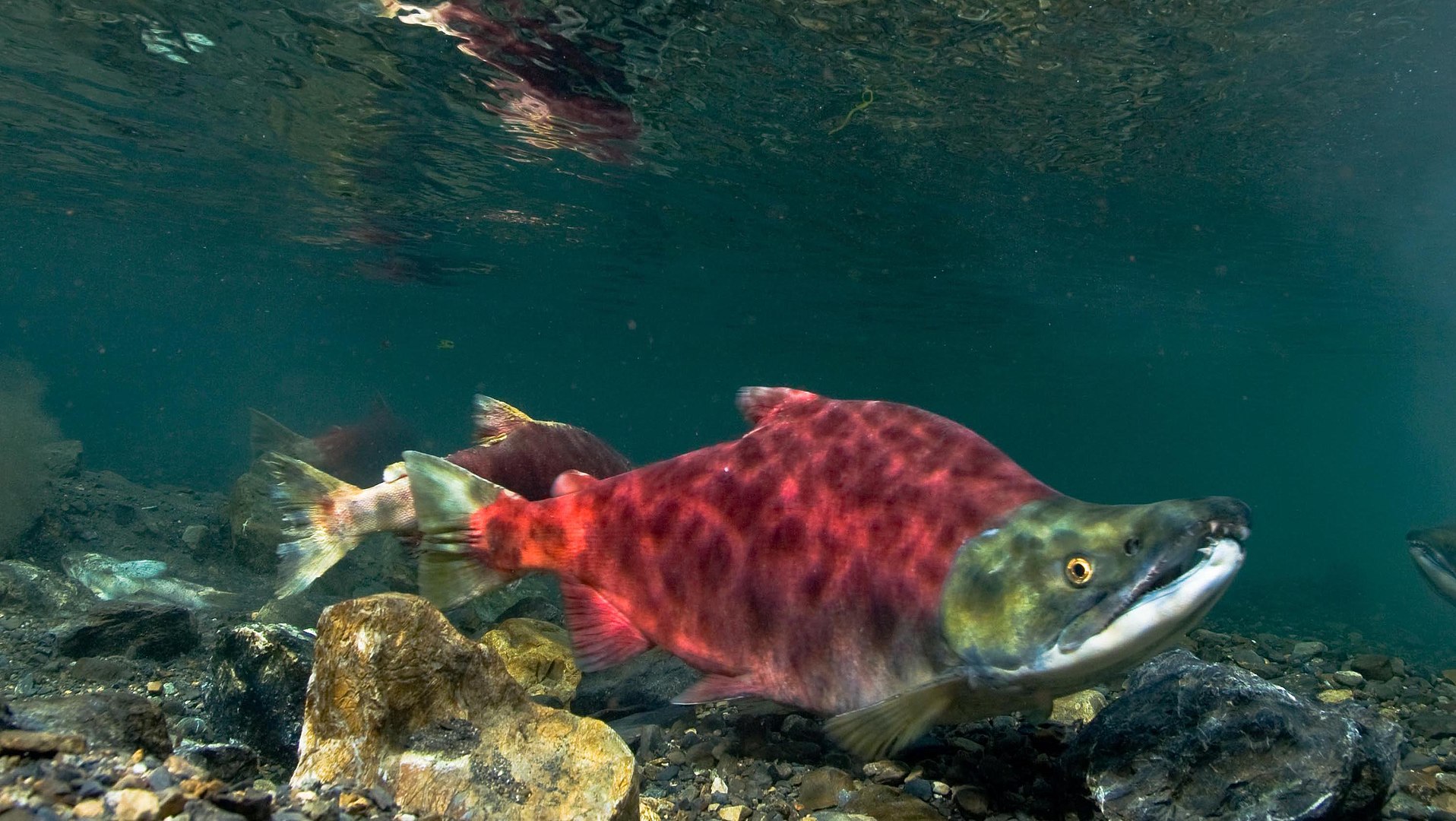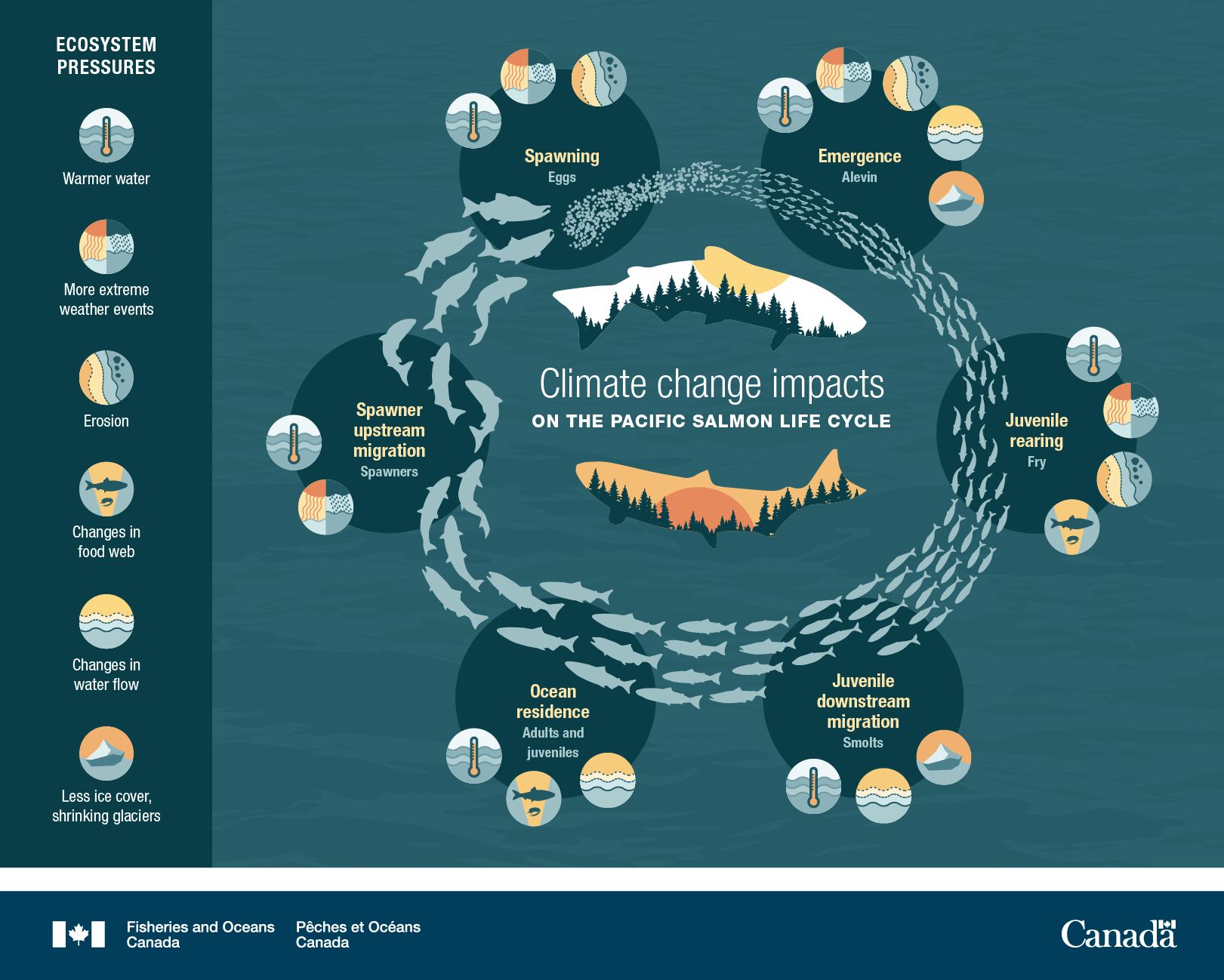Effects on Pacific Salmon
The effects of climate change on salmon populations, specifically juvenile Chinook and Steelhead in the Columbia River Basin (CRB), are significant and complex. Looking ahead to future climate scenarios (RCP4.5 and RCP8.5) in the 2040s and 2080s, we expect big changes in the temperatures of streams that are crucial for salmon habitat.

In the Lower Columbia River, where juvenile Chinook migrate from May 20 to June 30, historical temperatures have been just right for them. But by the 2080s, due to climate warming, these temperatures are likely to become too warm, causing stress for Chinook. On the other hand, juvenile Steelhead, migrating slightly earlier from April 17 to May 28, currently face temperatures that are not ideal in the Lower Columbia River. However, with warming, their habitat is expected to become better suited to Steelhead survival by the 2080s.
In the Upper Columbia River, where temperatures have been too cold for smolt Chinook and Steelhead historically, climate projections suggest that temperatures will warm up to the right range for both species by the 2080s. But in the Snake River, which is currently good for juvenile Chinook, temperatures are forecasted to become stressful by the 2040s and potentially deadly by the 2080s. Conversely, Steelhead in the Snake River may benefit from the warming, moving into the optimal temperature range by the 2080s.

Additionally, human actions like river regulation and water withdrawals affect stream flow during salmon migration, further impacting their survival. Climate change alone is expected to reduce flow in the Columbia and Snake Rivers during Chinook migration and potentially increase flow in the Upper Columbia during Steelhead migration. However, water management actions usually decrease flow in the Upper Columbia and have mixed effects on the Snake River, leading to warmer stream temperatures, especially in the Upper and Lower Columbia regions.
These expected changes in stream temperatures and flow will directly impact the survival rates of juvenile salmon across different parts of the Columbia River Basin. While warming temperatures might benefit Steelhead, they could pose challenges for Chinook, especially in places like the Lower Columbia and Snake River. These findings highlight the urgent need for adaptive strategies to protect and sustain salmon populations in the face of ongoing climate changes.
References
Zhang, Xiao, et al. “On the variable effects of climate change on Pacific Salmon.” Ecological Modelling, vol. 397, Apr. 2019, pp. 95–106, https://doi.org/10.1016/j.ecolmodel.2019.02.002. Date Accessed: 4/15/2024

